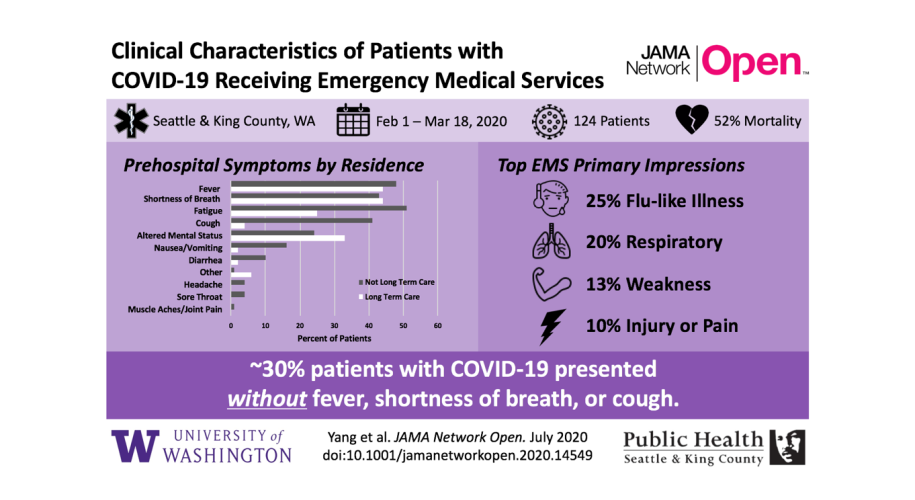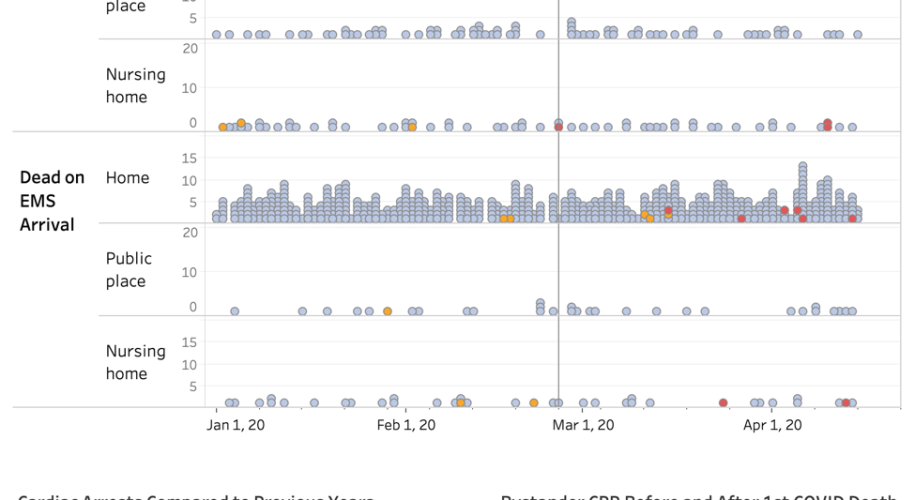
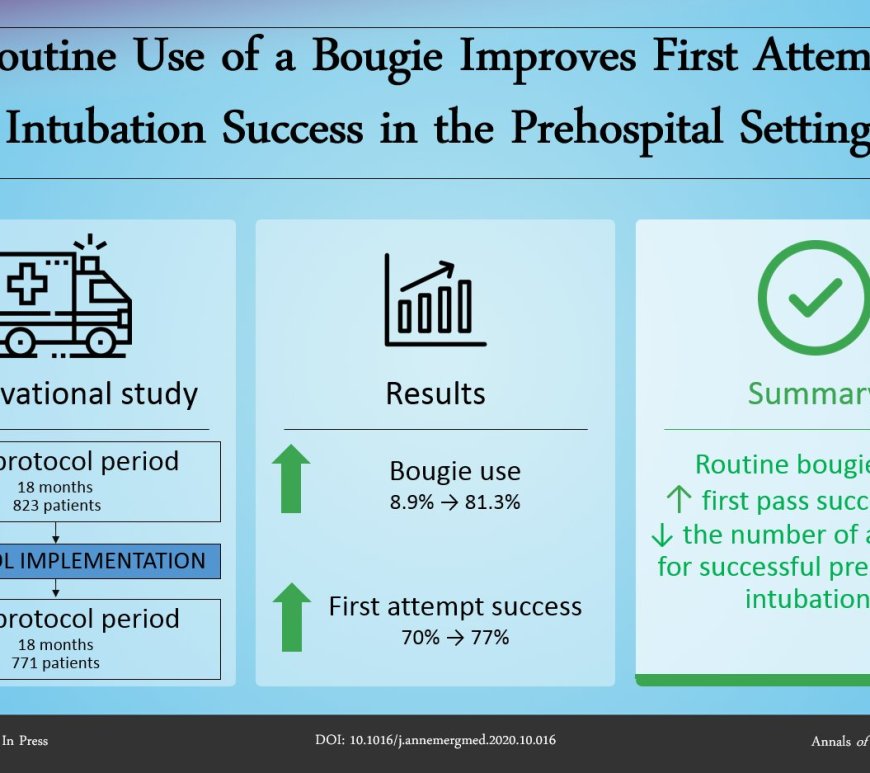
Routine Use of a Bougie Improves First-Attempt Intubation Success in the EMS Setting
Study objective The bougie is typically treated as a rescue device for difficult airways. We evaluate whether first-attempt success rate during paramedic intubation in the out-of-hospital setting changed with routine use of a bougie. Methods A prospective, observational, pre-post study design was used to compare first-attempt success rate during out-of-hospital intubation with direct laryngoscopy for patients intubated 18 months before and 18 months after a … Continue reading Routine Use of a Bougie Improves First-Attempt Intubation Success in the EMS Setting

Seizure-like presentation in OHCA creates barriers to dispatch recognition of cardiac arrest
Abstract Purpose Early recognition of out-of-hospital cardiac arrest (OHCA) by 9-1-1 dispatchers is a critical first step along the resuscitation pathway. Barriers to recognition may lead to adverse outcomes among patients. This study aims to determine the impact of seizure-like activity among OHCA patients during 9-1-1 calls. Methods We evaluated a retrospective cohort study of all adult, non-traumatic OHCAs that occurred prior to emergency medical … Continue reading Seizure-like presentation in OHCA creates barriers to dispatch recognition of cardiac arrest

Research Analysis: Preventing downstream consequences of EMS assaults
The National Association of EMTs (NAEMT) recently published a survey on member experiences with violence in the prehospital setting. They received nearly 2,200 responses from mostly paramedics and EMTs detailing not only their exposure to violence, but also the role violence plays on their perceptions of safety, provider knowledge of reporting systems, agency policies and procedures, as well as the types of education and training … Continue reading Research Analysis: Preventing downstream consequences of EMS assaults

Research Analysis: Status epilepticus: Pick your antidote
Results from the Established Status Epilepticus Treatment Trial (ESETT) were recently published in New England Journal of Medicine (NEJM), providing medical directors with a research-centric resource to turn to when epileptic patients don’t respond to traditional benzodiazepines. Specifically, ESETT was an NIH and FDA funded joint effort by the Neurological Emergencies Treatment Trials (NETT) Network and the Pediatric Emergency Care Applied Research Network (PECARN) in … Continue reading Research Analysis: Status epilepticus: Pick your antidote
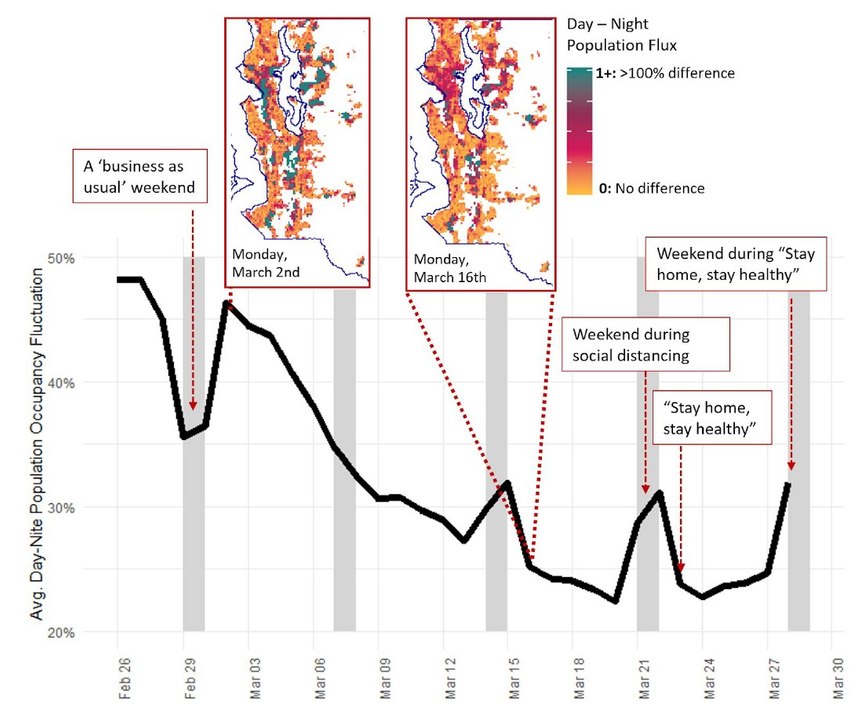
8 types of data: Telling the story of COVID-19
As the United States enters its second month of COVID-19, the availability of data on the pandemic that will define a generation has become almost overwhelming. Websites abound with tables, graphics and projections on how different aspects of the crisis are unfolding. Some use data to make their case for a far-flung theory, others display it in a way that tells an easy-to-interpret story of … Continue reading 8 types of data: Telling the story of COVID-19
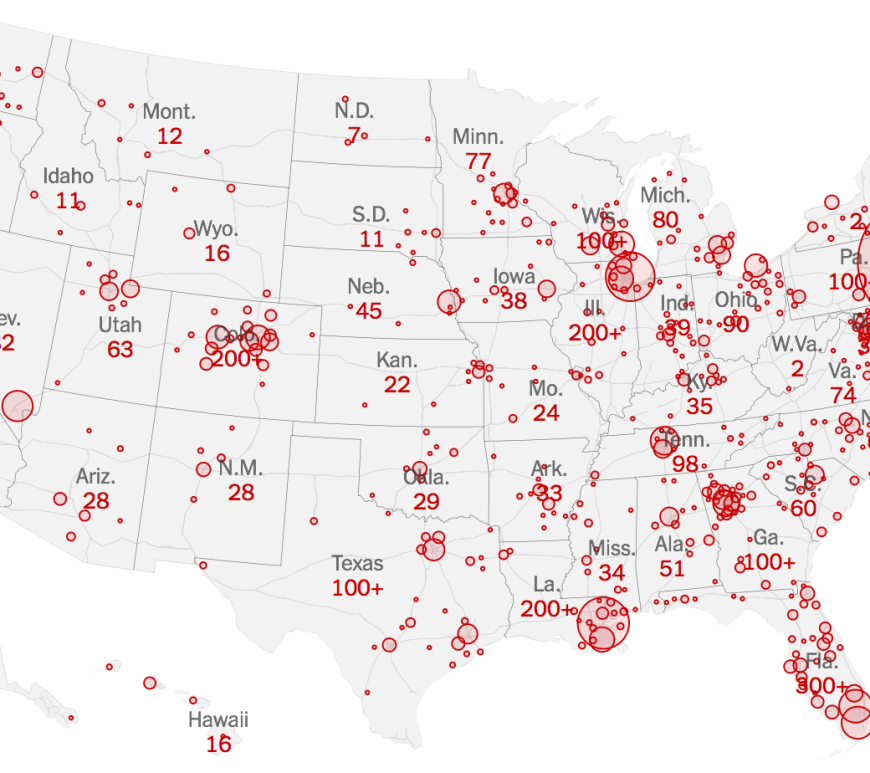
7 data visualizations that explain COVID-19
Throughout the last two months, Seattle and King County have been on the front lines of the COVID-19 pandemic in the United States. The first COVID-19 case within our borders was confirmed in Snohomish County, Washington on Jan. 21, 2020. The first reported death happened nearly six weeks later at a hospital 15 miles from downtown Seattle. For a month and a half, the virus … Continue reading 7 data visualizations that explain COVID-19

Targeted Temperature Management at 33 Versus 36 Degrees: A Retrospective Cohort Study
Abstract Objectives: To determine the association between targeted temperature managementgoal temperature of 33°C versus 36°C and neurologic outcome after out-of-hospital cardiac arrest. Design: This was a retrospective, before-and-after, cohort study. Setting: Urban, academic, level 1 trauma center from 2010 to 2017. Patients: Adults with nontraumatic out-of-hospital cardiac arrest who received targeted temperature management. Interventions: Our primary exposure was targeted temperature management goal temperature, which was changed from 33°C to 36°C in April of 2014 at the study hospital. Primary … Continue reading Targeted Temperature Management at 33 Versus 36 Degrees: A Retrospective Cohort Study

Research analysis: Using continuous feedback to drive cardiac arrest care improvements
The Municipal Emergency Medical Services of Vienna implemented a standardized post-resuscitation feedback system and performed a two-year evaluation of its impact on performance and patient outcomes. They recently published their results in “Resuscitation.” Within 48 hours of every out-of-hospital cardiac arrest (OHCA) from August 2013 through July 2015 (n = 2466) providers received comprehensive feedback on their performance related to “compression rate, compression ratio, ventilation … Continue reading Research analysis: Using continuous feedback to drive cardiac arrest care improvements

Machine learning as a supportive tool to recognize cardiac arrest in emergency calls
Background Emergency medical dispatchers fail to identify approximately 25% of cases of out of hospital cardiac arrest, thus lose the opportunity to provide the caller instructions in cardiopulmonary resuscitation. We examined whether a machine learning framework could recognize out-of-hospital cardiac arrest from audio files of calls to the emergency medical dispatch center. Methods For all incidents responded to by Emergency Medical Dispatch Center Copenhagen in … Continue reading Machine learning as a supportive tool to recognize cardiac arrest in emergency calls
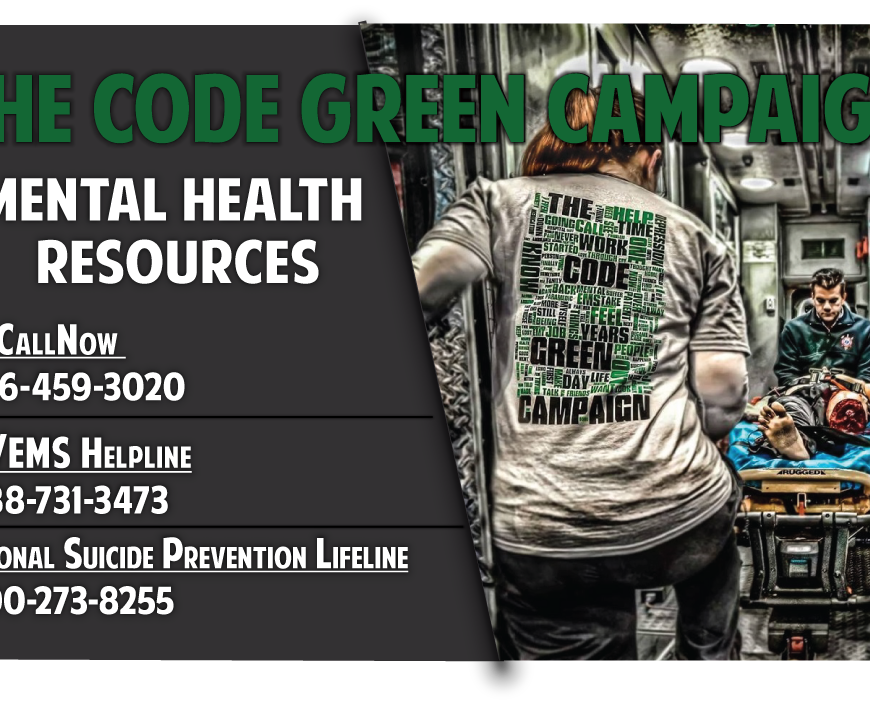
Research Analysis: More than 1-in-20 EMT deaths are due to suicide
A study out of the University of Arizona College of Medicine was recently published online in Preshospital Emergency Care. The researchers looked at all deaths that occurred in Arizona, as well as the deaths of Arizona residents in another state or country, between 2009 and 2015. Of the 350,998 adult deaths recorded, all were categorized as either suicide or non-suicide via the listed ICD-10 code. The suicides were then further … Continue reading Research Analysis: More than 1-in-20 EMT deaths are due to suicide

